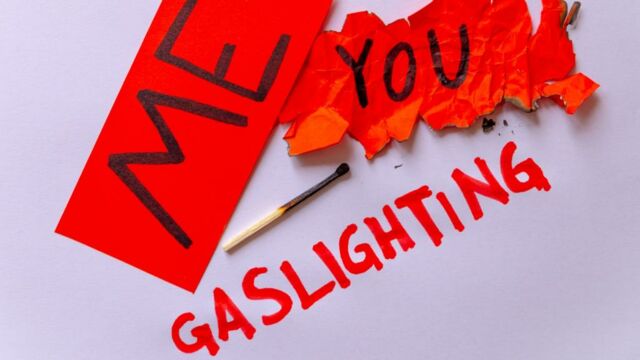Some victims of abuse have felt safe coming forward in recent years, as plenty of organisations and support systems have become far more accessible to those in need. When victims of abuse describe their experiences, one word pops up quite frequently: gaslighting.
Discover our latest podcast
It seems that almost all abusive relationships include gaslighting in one way or another. For those who have never been gaslighted before, though, it can be an extremely confusing topic.
So, what is the definition of gaslighting?
Gaslighting is a psychological manipulation tactic used to sow seeds of doubt in another person (or group). Abusers typically gaslight their victims by using denial, contradiction, misinformation, and misdirection. Some examples of phrases gaslighters use often include, 'that never happened,' 'you’re too sensitive,' 'you made me do this,' 'why are you making this such a big deal?' Gaslighters often deny previous incidents where they were abusive and trivialise the feelings of their victim. Some gaslighters will even go so far as to stage scenes with the intent of confounding their victim and leaving them mentally vulnerable.
The goal of a gaslighter is to make their victim question their reality, memories, and judgment, as this usually ends up with the victim feeling timid and unsure of what’s real or not. As a result, the victim will become overly dependent on their gaslighter because they’ve begun to doubt all of their own thoughts. It’s also important to note that this type of abuse isn’t exclusive to romantic relationships, either. Family members, friends, and bosses can also be gaslighters.
A brief history
The term gaslighting has a very direct source—in fact, it originated from a British play titled Gas Light. The play, created by Patrick Hamilton, was first performed in 1938 and moved on to have stage and film adaptations in the United States.Gas Light tells the story of a husband who manipulates his wife into doubting her sense of reality, all so he can send her to a mental institute and steal her inheritance. The play resonated with several people, and people began using the term colloquially in the 1960s. Then, in the 1970s, the term began to get used in clinical psychological literature and other forms of social commentary. Studies on gaslighting and gaslighters followed soon after, paving the way for modern psychology.
Where are we now?
The world’s understanding of 'gaslighting' has grown so much, especially since it began as a conversational way to explain the specific type of manipulation depicted in Gas Light.Now, it’s a widespread term understood by many. Psychologists have discovered that gaslighting is a common tactic of narcissists and sociopaths, and through various studies, they’ve been able to create helpful lists detailing what gaslighting looks like, what forms it comes in, and what behaviours to look out for.
As examples and scenarios become more commonplace, people nowadays are better prepared to detect when they’re being gaslit, and many psychologists even use gaslighting as an indicator of an abusive or unhealthy relationship.
Key figures
While an important key figure in the history of gaslighting is Patrick Hamilton, the man behind Gas Light, there are so many psychologists and scholars that have contributed to our understanding of the phenomenon. Patricia Evans wrote a book in 1996, The Verbally Abusive Relationship, that describes seven warning signs of gaslighting that is still the standard today; this book has helped countless people understand their situation and abuser more.
Like Evans, psychologistElinor Greenberg has also made lasting contributions to psychology by categorising the three most common methods of gaslighting. Psychotherapist Theodore Dorpat also wrote a book detailing the frequent gaslighting and abuse of power in certain psychiatric settings. He describes several instances where mental health professionals use gaslighting in order to shape the behaviour of their patients. Thanks to Dorpat’s work, people began investigating the use of gaslighting in less traditional relationships, which is why we now have studies about gaslighting in politics, the workplace, and popular culture.
How to get help when you’re being gaslit
- Recognising the problem is the first step. Gaslighting can be a tricky thing to notice if the gaslighter is successful. If you feel like you’re being gaslit, try keeping a diary of what happens in your conversations. By doing this, you’ve created something tangible and truthful that you can fall back on when you begin to doubt yourself.
- Get support. This is easier said than done, but if you are aware of the gaslighting, it might be time to involve others and seek out a support system. By consulting others, they’re able to validate your memories and feelings, while also maintaining a more unbiased view. This can help them give you more objective advice and guidance as you manoeuvre through this situation.
- Create a safety plan. Unfortunately, if the abuse continues, it may be time to leave that relationship. Safety plans can be vital in these situations since no one can be positive about what lengths an abuser will go to. This may require you to lean on friends or professional help, like a therapist.















